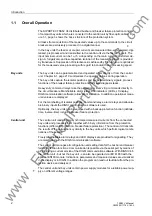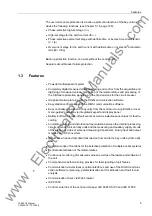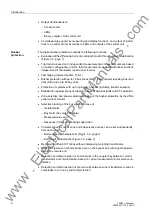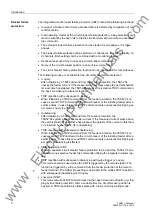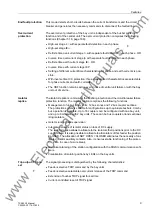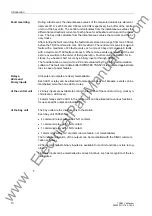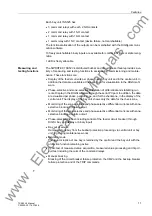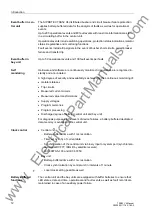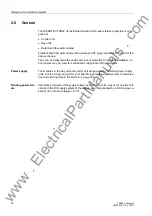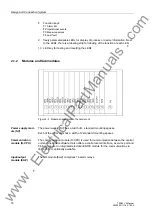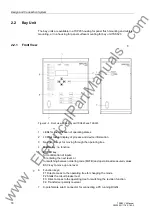
Introduction
4
7SS52 V4 Manual
C53000-G1176-C182-3
1.2
Applications
Application
The SIPROTEC 7SS52 V4 distributed busbar and breaker failure protection is a se-
lective, reliable and fast protection for busbar short-circuits and circuit-breaker failures
in medium-voltage, high-voltage and extra high-voltage switching stations. It is suita-
ble for almost all busbar configurations.
The busbar protection uses a phase-selective measuring principle.
The protection system consists of a central unit (CU) and up to 48 bay units (BU) con-
nected by fiber-optic (FO) cables. The latter can be located in the vicinity of the bays
(distributed) but also together with the CU in cubicles (centralized).
Use and scope of
functions
The protection can be used with all types of switchgear with either conventional or lin-
earized CTs.
The modular design facilitates extensions or modifications of the protection system in
conformity with the switchgear design.
The 7SS52 V4 is designed for 12 selective bus zones and 12 bus coupler (auxiliary
bus) sections. These are sections which serve exclusively for coupling of the bus
zones. They do not have any feeders. The busbar configuration can include up to 24
sectionalizing isolators and 16 bus couplers with one bay unit or 8 bus couplers with
two bay units.
By virtue of the universal isolator replica, the SIPROTEC 7SS52 V4 distributed busbar
and breaker failure protection can be matched with different busbar configurations in
the design phase.
Compensation of different current transformer ratios is achieved by parameter setting.
Interposing current transformers are thus no more required.
A busbar short-circuit is detected by evaluating the differential current and the stabi-
lizing current. Appropriate measures ensure correct performance even for extreme CT
saturation (requested current transmission time
≥
2 ms for stability in the case of ex-
ternal faults and
≥
3 ms for tripping).
The integrated circuit breaker failure protection (CBF) can be operated in five modes,
selectable per bay (see Chapter 5.3.5.2, page 119):
•
I
>
query (1-stage CBF)
•
TRIP repetition with overcurrent detection I
>
(2-stage CBF)
•
Unbalancing (1-stage CBF)
•
TRIP repetition with following unbalancing (2-stage CBF)
•
Single-pole or three-pole start by external CBF and tripping via the isolator replica
In addition, the integrated circuit breaker failure protection provides two operating
modes that can be set in parallel to the other five modes (see Chapter 5.3.5.2, page
119):
•
Low-current operating mode without/with TRIP repetition
•
Pulse mode
www
. com













